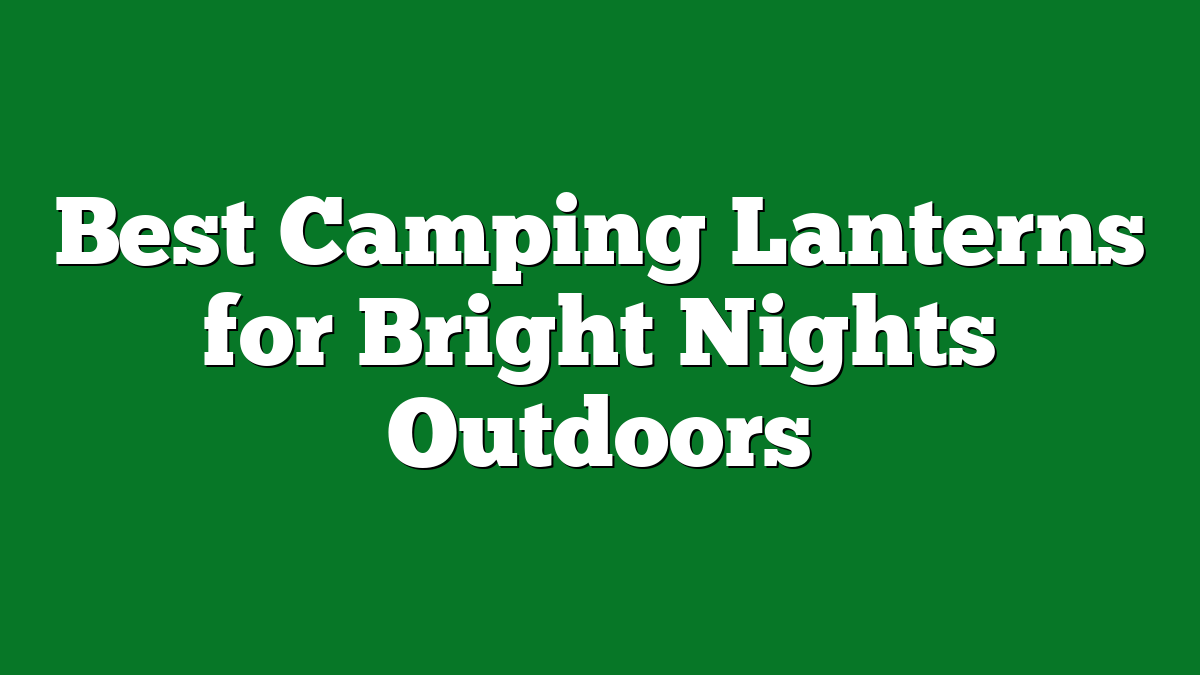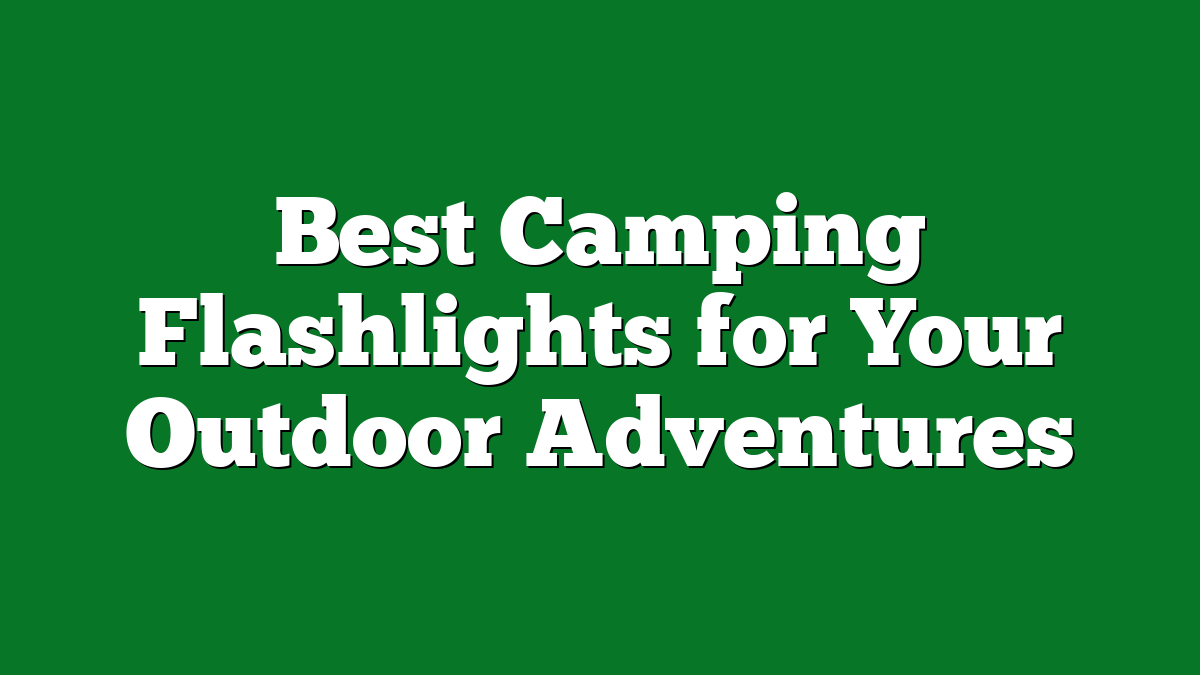If you’re looking for a camping adventure that combines stunning landscapes with outdoor fun, Acadia National Park is the place to be. Nestled along Maine’s rugged coast, this park offers a perfect blend of towering mountains, serene lakes, and breathtaking ocean views. I can’t think of a better way to immerse yourself in nature than by pitching a tent under the starry sky.
In this guide, I’ll share my favorite tips and insights for camping in Acadia. Whether you’re a seasoned camper or a newbie, you’ll find everything you need to make the most of your experience. From choosing the right campsite to exploring the park’s scenic trails, let’s dive into the wonders that await you in this beautiful corner of the world.
Overview of Acadia National Park
Acadia National Park, located on Mount Desert Island in Maine, offers a unique blend of rugged coastline and picturesque landscapes that captivate any outdoor enthusiast. Spanning over 49,000 acres, the park features granite peaks, dense forests, and scenic shorelines. I’ve always found the mix of mountains and ocean invigorating.
The park’s elevation, ranging from sea level to 1,530 feet at Cadillac Mountain, presents diverse ecosystems. Hiking trails meander through these environments, allowing for close encounters with wildlife like deer and foxes. Each trail reveals the beauty of the park, whether you’re walking along the coast or climbing a peak.
Climate in Acadia varies by season. Summers are warm and great for camping, while autumn brings vibrant foliage that creates breathtaking views. Winters can be harsh, but they offer snowshoeing and cross-country skiing opportunities. Spring revitalizes the area, with blooming wildflowers enhancing the scenery.
Acadia’s accessibility is another highlight. The park hosts numerous campgrounds, each different yet equally charming. You can find options close to the ocean or nestled in the woods, catering to various preferences and needs. The amenities at these campgrounds can vary, so it’s important to check what each site offers.
Exploring Acadia means immersing yourself in outdoor activities. From hiking and biking to kayaking and fishing, there’s something for everyone. The natural beauty and rich biodiversity make this park a cherished destination for campers like me. I encourage you to embrace the experience and make the most of everything Acadia has to offer.
Best Camping Locations
Acadia National Park offers diverse camping experiences, from well-equipped campgrounds to secluded backcountry sites. Each location provides a unique way to appreciate the park’s stunning landscapes.
Campgrounds with Amenities
I often choose campgrounds that offer amenities for convenience, and Acadia’s campgrounds fit that perfectly. Here are a few top picks:
- Blackwoods Campground: Located near the park entrance, Blackwoods Campground features over 300 sites. It includes picnic tables, fire rings, and access to restrooms with running water. Plus, it’s a short drive to Maine’s iconic shoreline.
- Seawall Campground: This quieter option sits along the western side of the island. Seawall offers more than 200 sites in a forested setting, complete with restrooms and a nearby picnic area. The proximity to the ocean makes it a peaceful spot for sunset watching.
- Schoodic Woods Campground: The Schoodic Peninsula offers a more remote experience. This campground provides electric sites, showers, and easy access to trails. It’s less crowded, ideal for those looking to escape the busier areas of the park.
Backcountry Camping Options
For those craving adventure, backcountry camping in Acadia promises isolation amidst nature. Here’s where I often set up my camp:
- Campsites in the Northeast Harbor: Scout out less-traveled trails like the Green Mountain Trail. You’ll find primitive sites along the way, perfect for stargazing and enjoying the sounds of nature.
- Mount Katahdin Range: Heading into Acadia’s interior opens opportunities for true wilderness experiences. I enjoy camping along the trails that lead to hidden lakes and remote vistas.
- Island Camping: Consider kayak camping on the nearby islands. I’ve spent nights on islands like Isle au Haut, where I set up camp on rocky shores. This experience combines the thrill of adventure with the peaceful solitude of nature.
Acadia National Park’s camping locations offer varied experiences, all with the backdrop of its breathtaking beauty.
Planning Your Camping Trip
Planning a successful camping trip at Acadia National Park involves understanding permits and regulations and knowing what to pack. With these essentials covered, I can focus on enjoying nature’s wonders.
Permits and Regulations
Before I hit the trails or set up camp, I ensure to check the park’s permit requirements. Campsites in Acadia National Park do not require special permits, but I always reserve a spot, especially during the peak season from late spring to early fall. Blackwoods and Seawall Campgrounds fill up quickly, so booking in advance guarantees me a place to rest after a long day.
While I’m out in the park, I follow the “Leave No Trace” principles. That means disposing of waste properly, respecting wildlife, and sticking to marked trails. I also note that campfires are only allowed in designated fire pits at certain campgrounds. Following these regulations helps preserve the park’s beauty for everyone to enjoy.
What to Pack
Packing wisely makes all the difference in my camping experience. Here’s what I include:
- Tent and Sleeping Gear: I always take a weather-appropriate tent, sleeping bag rated for the season, and an inflatable sleeping pad for comfort.
- Cooking Equipment: A portable stove, cookware, and a lightweight coffee maker ensure I can whip up meals quickly. I also carry a good set of utensils.
- Clothing: I pack layers, as Acadia’s weather changes rapidly. A waterproof jacket, sturdy hiking boots, and quick-dry clothes keep me prepared for anything.
- Food and Water Supplies: I plan meals in advance and pack non-perishable food items. A reliable water filtration system or purification tablets keeps me hydrated.
- Navigation Tools: A detailed map, compass, and GPS device help me explore the park without getting lost.
- First Aid Kit: I never underestimate the importance of a stocked first aid kit for minor injuries.
Activities While Camping
Camping at Acadia National Park offers a myriad of activities that bring the beauty of nature to life. From hiking on scenic trails to wildlife watching, there’s something for every outdoor enthusiast.
Hiking Trails
I often explore the park’s extensive network of hiking trails. Trails range from easy walks to challenging hikes, catering to all skill levels. The Jordan Pond Path, a 3.3-mile loop, allows for stunning views of the Bubbles Mountains and is perfect for families. For a more rigorous experience, I recommend the Precipice Trail, an exhilarating climb that leads to breathtaking vistas from the summit. With over 120 miles of trails to choose from, each hike reveals the diverse ecosystems of Acadia, with changing landscapes and unique plants.
Wildlife Watching
Wildlife watching captivates me during my camping trips. Acadia’s varied habitats support an abundance of wildlife. Early mornings or late afternoons provide the best chances to see deer, foxes, and an array of birds, including the majestic peregrine falcon. I often bring binoculars to enhance my viewing experience. The park’s diverse ecosystems host over 300 species of birds, making it a paradise for birdwatchers. I find that taking the time to sit quietly in nature reveals countless animal antics, enriching my camping experience.
Exploring these activities not only deepens my connection with nature but also makes my time in Acadia unforgettable.
Safety Tips for Campers
Camping in Acadia National Park can be a thrilling experience, but safety remains a top priority. I’ve learned several crucial tips to ensure a secure and enjoyable adventure in the outdoors.
- Be Aware of Wildlife: Acadia’s diverse ecosystem hosts animals like black bears, moose, and porcupines. I always recommend keeping food stored in bear-proof containers and maintaining a safe distance from wildlife. Observing animals can be enjoyable, but safety should never be compromised.
- Check Weather Conditions: Weather in Maine can change quickly. I make it a habit to check forecasts before heading out and during my stay. Staying informed about potential storms or temperature drops helps me pack accordingly and adjust my plans if necessary.
- Stay on Marked Trails: Hiking off-trail can lead to dangerous situations. I stick to marked paths to reduce the risk of getting lost or injured. The park’s trails are well-maintained and offer incredible views, making it easy to explore safely.
- Report Accidents and emergencies: In case of an emergency, I’ve found that knowing how to reach park rangers or locate help expedites assistance. Keep a map handy, and familiarize yourself with emergency contact information if the need arises.
- Use Proper Gear: I emphasize using appropriate gear such as sturdy hiking boots, weather-resistant clothing, and a reliable backpack. A headlamp or flashlight is essential for navigating at night. I also carry a first aid kit that’s easily accessible.
- Practice Fire Safety: Fires can enhance a camping experience, but they can also be hazardous. I always make use of designated fire pits and follow campfire regulations. Ensuring that the fire is completely extinguished before leaving the site is crucial to preventing wildfires.
- Stay Hydrated: Drinking ample water is vital, especially during outdoor activities. I always carry a refillable water bottle and know the locations of water sources. Treating water from streams or lakes makes it safe to drink.
- Know Your Limits: Recognizing personal limits prevents accidents and enhances the camping experience. I assess my energy levels and choose activities that match my physical capabilities. Pushing too hard can lead to exhaustion or injuries.
- Practice “Leave No Trace”: Protecting the environment is important. I follow the “Leave No Trace” principles, which involve packing out all trash, minimizing campfire impact, and respecting wildlife. This ensures that Acadia’s beauty remains intact for future visitors.
By following these safety tips, I enjoy a worry-free camping experience in Acadia National Park and savor the natural wonders this incredible destination offers. Whether navigating the rugged trails or relaxing by a campfire, staying safe allows me to fully embrace the beauty of the great outdoors.
Conclusion
Camping in Acadia National Park is truly an adventure like no other. With its breathtaking landscapes and diverse ecosystems there’s something for everyone to enjoy. Whether you’re a seasoned camper or just starting out I hope you feel inspired to explore the beauty of this Maine gem.
Remember to plan ahead and pack wisely so you can fully immerse yourself in all the park has to offer. From hiking scenic trails to simply soaking in the views every moment spent here is a chance to connect with nature. I can’t wait for you to experience the magic of Acadia for yourself! Happy camping!











